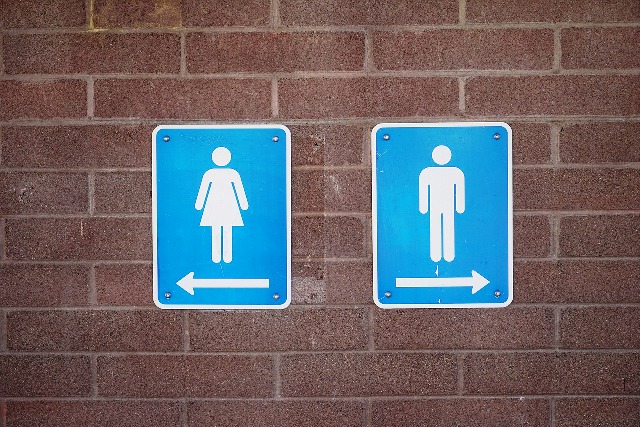To help save millions of people from early death and disease, forward-thinking companies could soon be turning a low-tech problem into the next tech-powered disruption—an approach that makes it possible for businesses to do well while doing good. This potential double win exists thanks to a piece of technology that rarely comes to mind when thinking of new business opportunities and global markets: the humble toilet.
Many of the new sanitation technologies have emerged from the Reinvent the Toilet Challenge, an initiative launched in 2011 by the Bill & Melinda Gates Foundation, which funded innovators developing alternative sanitation technologies. Technologies under development for the reinvented toilet include dry combustion (which converts human waste to a charcoal briquette type of fuel instead of flushing it away with water), wet oxidation (in which materials suspended in water are broken down using oxygen), and electrochemical processing (which uses metal oxides).
These emerging technologies remove the pathogens that can cause disease from human waste, eliminate safety concerns for service providers handling the waste processing, and promote environmental sustainability. The absence of fecal sludge transportation also reduces the risk of pollution and disease.
Many of the systems are being designed to operate off the grid, without connections to water and sewer systems or electrical lines. This means that sanitation solutions could be installed in parts of the world lacking access to power supplies and other infrastructure. With modular, portable, easy-to-install formats, they could allow for increases in use as populations expand and make it possible to extend safe sanitation to remote locations where sewage systems or septic tanks might not be feasible.
Tech disruption
The technologies under development could also help conserve valuable resources. They have low electricity and water requirements, minimizing their environmental footprint through reduced energy and water use. They also offer the possibility of recovering valuable energy, clean water, and nutrients from waste processing.
The new technologies could cost less to construct, install, and maintain than septic tanks and sewage systems. Reduced pit emptying and the absence of piped collection and fecal sludge transportation would make maintenance and operation cheaper. And with the potential for local companies to provide post-installation and maintenance services, these solutions could offer both low life cycle costs and sustainable business models.
The combination of low cost, high safety levels, flexibility, and low environmental risk means that reinvented-toilet technologies could play a critical role in accelerating progress toward meeting the UN Sustainable Development Goals (SDGs): Goal 6 aims to make sustainable management of water and sanitation available to all, and to end open defecation, by 2030.
Demand meets a favourable policy environment
Across the world, recognition of the need to address the sanitation challenge is rising. In the process, favourable policies are emerging. The SDGs provide an overarching global agenda. Meanwhile, countries are individually setting policy priorities and making significant investment decisions. Three key markets—China, India, and the US—illustrate the potential opportunity. And while the challenges they face vary, all three are prioritizing both high-visibility sites and areas of high need:
The ambitious Swachh Bharat (Clean India) campaign has exceeded its goal of installing 75 million toilets by 2019. The government reports that India has now built 87.2 million toilets. In 2015, the World Bank approved a $1.5 billion loan to support the rural component of the Swachh Bharat mission.
India is prioritizing high-visibility sites (public and community toilets) and high-need areas (slum redevelopments and affordable housing) and is seeking premium or midsegment apartment developers as suppliers. While traditional sanitation infrastructure will be used to help meet the country’s sanitation goals, the low-cost, modular formats, and the potential for installation in off-grid and rural areas, make reinvented-toilet technologies particularly compelling in India.
Cultivating early adopters
Companies can roll out new sanitation technologies to meet increased demand created by conflict, health crises, or natural disasters, such as the rapid expansion of refugee camps, the Ebola outbreak in West Africa, and the decimation of infrastructure in Puerto Rico in the wake of Hurricane Maria. In these situations, providing education and raising awareness can persuade consumers to switch to new products or services.
Crossover strategies are another approach. In drought-ridden Israel, for instance, the Israeli company Watergen developed technology that produces drinking water from the humid air. The Israeli Defense Forces, which wanted to reduce the need to carry water in the field, was the company’s first target customer. Since then, the company has expanded into smaller-scale civilian products. Its markets include Hyderabad, India, where Watergen is working with Tata Projects to address India’s drinking-water challenge.
Reaping social and financial returns
Global sanitation illustrates how companies can use their core business activities to create positive social impact. In the case of the reinvented toilet, providing the technologies that improve global health allows companies across the value chain to tap into a valuable revenue stream. BCG research on total societal impact has found that companies taking this approach tend to outperform others in their sector (according to October 2017 BCG report ‘Total Societal Impact: A New Lens for Strategy’).
If companies can harness early adopters, tap into established ecosystems, and do so while the policy environment is favourable to large-scale investments, the rewards in toilet tech look extremely attractive.
Source: Boston Consulting Group
Thank you for reading the story until the very end. We appreciate the time you have given us. In addition, your thoughts and inputs will genuinely make a difference to us. Please do drop in a line and help us do better.
Regards,
The CSR Journal Team


